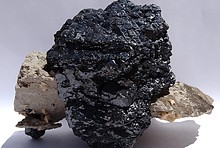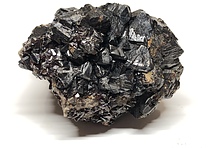Home PageAbout MindatThe Mindat ManualHistory of MindatCopyright StatusWho We AreContact UsAdvertise on Mindat
Donate to MindatCorporate SponsorshipSponsor a PageSponsored PagesMindat AdvertisersAdvertise on Mindat
Learning CenterWhat is a mineral?The most common minerals on earthInformation for EducatorsMindat ArticlesThe ElementsThe Rock H. Currier Digital LibraryGeologic Time
Minerals by PropertiesMinerals by ChemistryAdvanced Locality SearchRandom MineralRandom LocalitySearch by minIDLocalities Near MeSearch ArticlesSearch GlossaryMore Search Options
The Mindat ManualAdd a New PhotoRate PhotosLocality Edit ReportCoordinate Completion ReportAdd Glossary Item
Mining CompaniesStatisticsUsersMineral MuseumsClubs & OrganizationsMineral Shows & EventsThe Mindat DirectoryDevice SettingsThe Mineral Quiz
Photo SearchPhoto GalleriesSearch by ColorNew Photos TodayNew Photos YesterdayMembers' Photo GalleriesPast Photo of the Day GalleryPhotography
╳Discussions
💬 Home🔎 Search📅 LatestGroups
EducationOpen discussion area.Fakes & FraudsOpen discussion area.Field CollectingOpen discussion area.FossilsOpen discussion area.Gems and GemologyOpen discussion area.GeneralOpen discussion area.How to ContributeOpen discussion area.Identity HelpOpen discussion area.Improving Mindat.orgOpen discussion area.LocalitiesOpen discussion area.Lost and Stolen SpecimensOpen discussion area.MarketplaceOpen discussion area.MeteoritesOpen discussion area.Mindat ProductsOpen discussion area.Mineral ExchangesOpen discussion area.Mineral PhotographyOpen discussion area.Mineral ShowsOpen discussion area.Mineralogical ClassificationOpen discussion area.Mineralogy CourseOpen discussion area.MineralsOpen discussion area.Minerals and MuseumsOpen discussion area.PhotosOpen discussion area.Techniques for CollectorsOpen discussion area.The Rock H. Currier Digital LibraryOpen discussion area.UV MineralsOpen discussion area.Recent Images in Discussions
GeneralSal Ammoniac? La Palma.
18th Dec 2021 21:50 UTCRoger Curry
Just seen this video of the sulphur deposits on La Palma -
Regards,
Rog
18th Dec 2021 22:19 UTCPavel Kartashov Manager
18th Dec 2021 22:51 UTCRoger Curry
Please tell me more about your identification,
Cheers,
Rog
19th Dec 2021 00:42 UTCPavel Kartashov Manager
How do you think, what is source of NH3 in volcanic gases? I worked on fumaroles personally. The main halide on fumaroles is halite.
It seems to me, that you confusing real volcanic fumaroles with fumaroles of burning brown coals and their dumps.
Salmoniac is abundant only on La Fossa. But do you know some other similar place?

19th Dec 2021 03:49 UTCDoug Daniels

19th Dec 2021 09:44 UTCFrank Mersch
let us wait a little bit. Tuesday are heavy rains expected. Ammonia salts or Hallite will be solved, Sulfur will stay.
I am pretty sure - there will be a lot of publications about that eruption in the next months.
Frank
19th Dec 2021 10:43 UTCRoger Curry
Hi Pavel,
Excellent information from you, thank you. I myself have only minimal experience of volcanoes, mostly at the Italian ones. I spent a month at the La Fossa crater, and was fascinated by the sal ammoniac, getting some good pictures of its crystallisation. I hadn’t realised that it only occurs there and that other volcanoes don’t produce it in quantity. Which is why I posted the question. I bow down to your certainty of identification.
Cheers
Roger
19th Dec 2021 10:32 UTCKeith Compton 🌟 Manager
The following paper - while not on the Canary Islands does provide some interesting insights into fumarolic minerals and the variety of possibilities:
Balić-Žunić, T., Garavelli, A., Jakobsson, S.P., Jonasson, K., Katerinopoulos, A., Kyriakopoulos, K., Acquafredda, P. (2016) Fumarolic Minerals: An Overview of Active European Volcanoes. In Updates in Volcanology - From Volcano Modelling to Volcano Geology.
19th Dec 2021 10:59 UTCRoger Curry
I note that figure 5 is a photo of a large hunk of Sal ammoniac from Etna, so It’s not just Vulcano’s La Fossa which produces it. Whilst on Etna, I didn’t personally attempt the removal of any sublimates for examination, as it was a bit dodgy at the time, to say the least.
Cheers,
Rog




Mindat.org is an outreach project of the Hudson Institute of Mineralogy, a 501(c)(3) not-for-profit organization.
Copyright © mindat.org and the Hudson Institute of Mineralogy 1993-2024, except where stated. Most political location boundaries are © OpenStreetMap contributors. Mindat.org relies on the contributions of thousands of members and supporters. Founded in 2000 by Jolyon Ralph.
Privacy Policy - Terms & Conditions - Contact Us / DMCA issues - Report a bug/vulnerability Current server date and time: May 12, 2024 20:45:26
Copyright © mindat.org and the Hudson Institute of Mineralogy 1993-2024, except where stated. Most political location boundaries are © OpenStreetMap contributors. Mindat.org relies on the contributions of thousands of members and supporters. Founded in 2000 by Jolyon Ralph.
Privacy Policy - Terms & Conditions - Contact Us / DMCA issues - Report a bug/vulnerability Current server date and time: May 12, 2024 20:45:26











